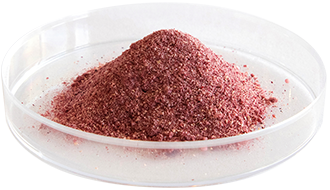Airborne particle pollution primarily comes from the burning of fossil fuels. The smallest of these particles, 2.5 micrometres or less, dubbed particulate matter 2.5 (PM2.5) are less than two and a half thousandths of a millimetre. They are so small that it takes sixty of them to span the diameter of a single human hair.

Researchers worldwide teamed up in a multi-centre, international study1 to examine overall composition and global variation in the material making up PM2.5. These particles are made up of ammoniated sulfate, crustal material, black carbon, ammonium nitrate, sea salt, trace element oxides, trapped water, and residual matter.
| Composition | average percentage | variation (+/-) |
| Residual matter | 40 | 24 |
| Ammoniated sulfate | 20 | 11 |
| Crustal material | 13.4 | 9.9 |
| Black carbon | 11.9 | 8.4 |
| Ammonium nitrate | 4.7 | 3.0 |
| Sea salt | 2.3 | 1.6 |
| Trace element oxides | 1.0 | 1.1 |
| Water | 7.2 | 3.3 |
The highest proportion (40%) comes from residual matter, primarily from combustion of fossil fuels (coal, oil, gas) or extant sources of fuel, such as wood. Using potassium-to-aluminium (K:Al) ratios, researchers were able to estimate whether residual matter arose from wood smoke, as potassium is a known marker of wood smoke elemental origin. Similarly, using zinc-to-aluminium (Zn:Al) ratios researchers were able to estimate whether material was of man-made (anthropogenic) origin, or arising from natural sources. This is because aluminium is one of the Earth’s crust’s most abundant elements, whilst zinc enrichment arises from human activities.
The second most abundant compositional component of PM2.5 was ammoniated sulfate, primarily driven by sources of sulfur. In some locations this was volcanic sulfur, but for most locations, this was anthropogenic, from the burning of fossil fuels. In particular, emerging economies still relying upon sulfur to control fuel predetonation for motor vehicle engines yielded prominent levels of this, whilst it has been phased out from more established economies.
Crustal material accounted for the third-most abundant component of PM2.5. This is sand, dust and other windborne particles of soil origin, and was most prevalent in sites near large regions of arid terrain.
Black carbon, the fourth-most abundant component, was most likely to be from exhaust fumes, particularly diesel exhausts in the emerging economies.
Collectively, the contributions from different sources are a combination of climate and atmospheric conditions, and show the degree of man-made impact upon these conditions.
1Snider et al. (2016) Variation in global chemical composition of PM2.5: emerging results from SPARTAN. Atmos. Chem. Phys., 16, 9629-9653. DOI: 10.5194/acp- 16-9629-2016







